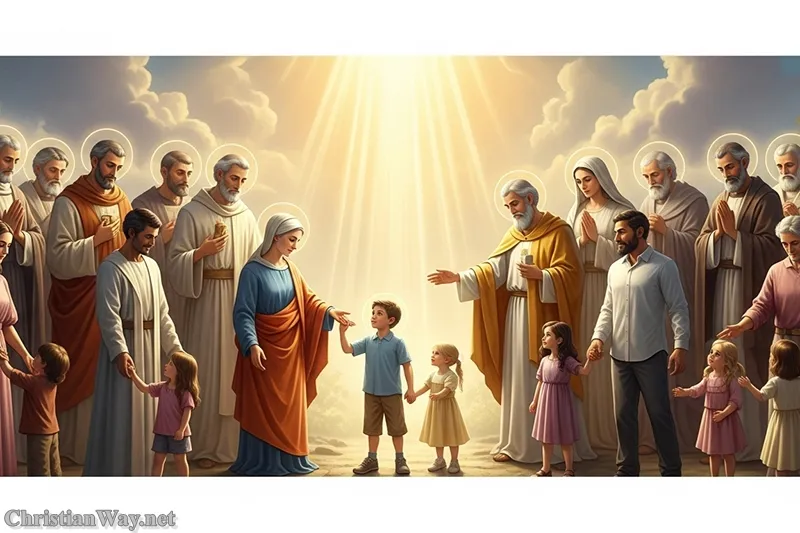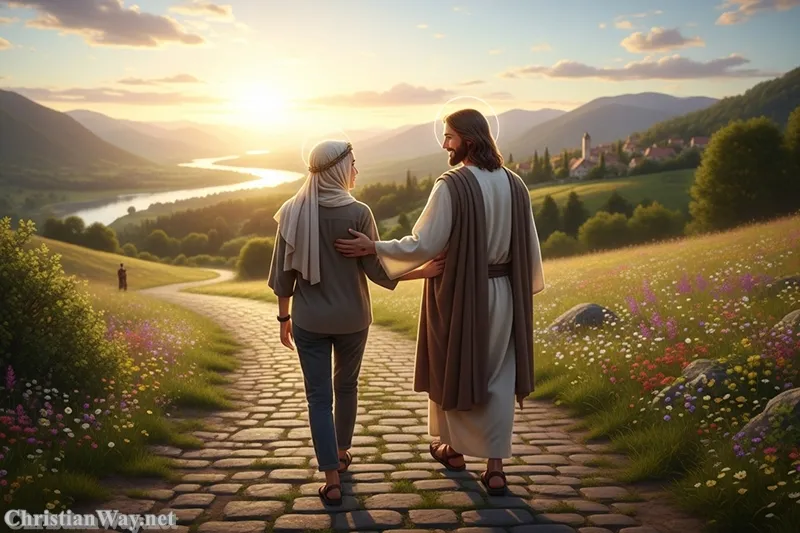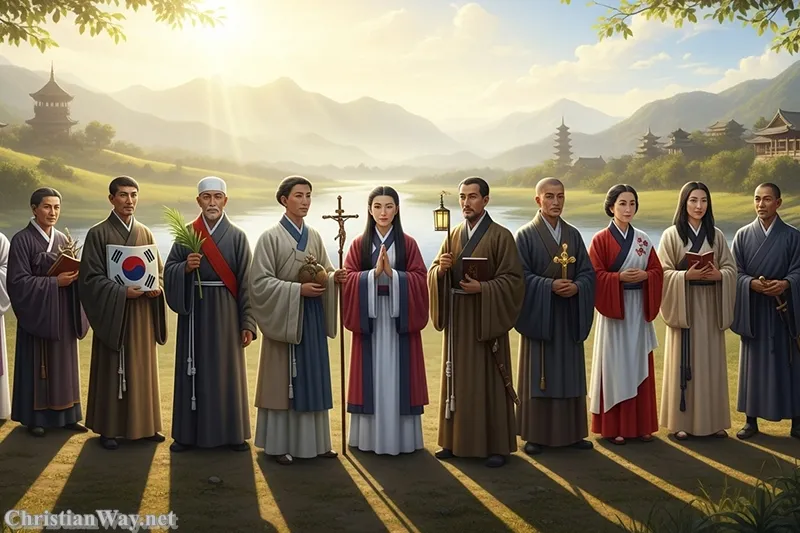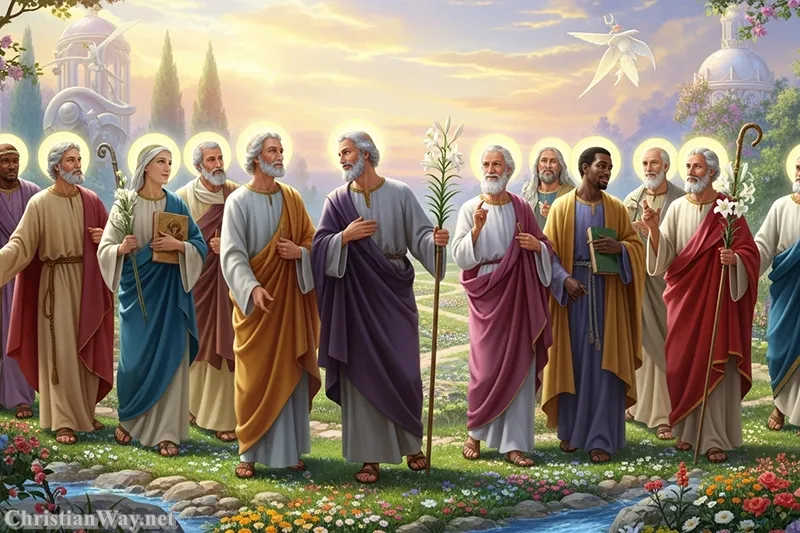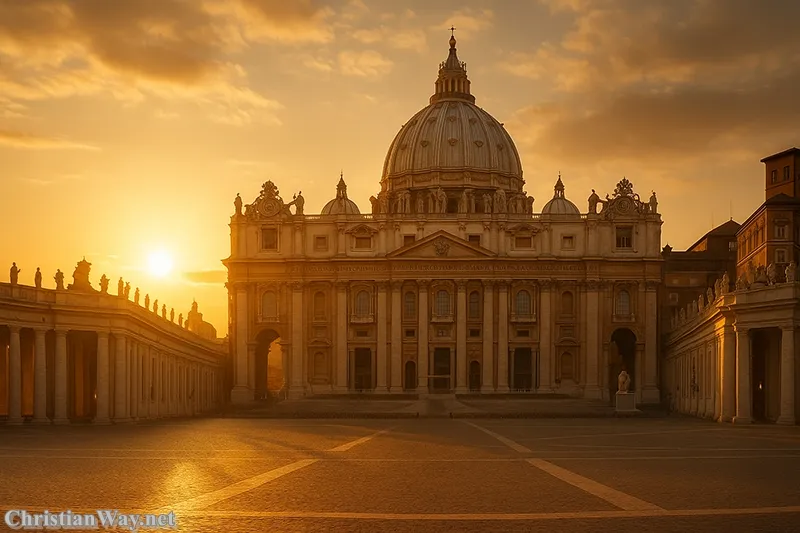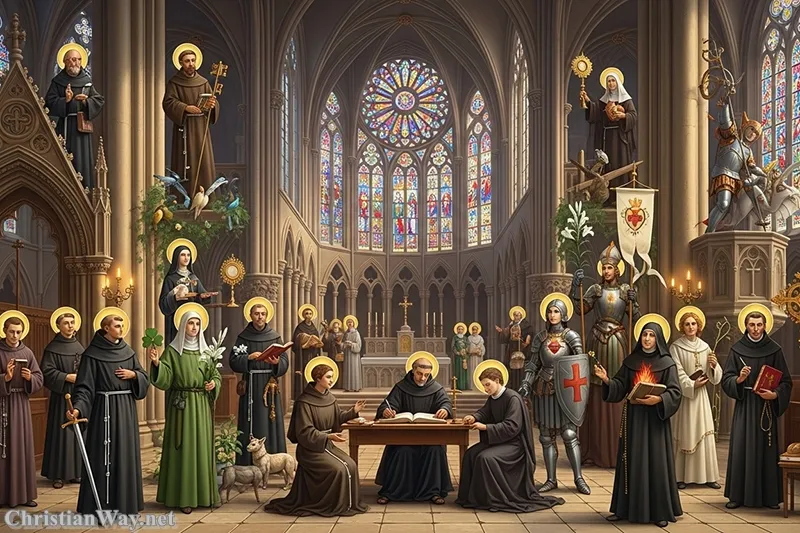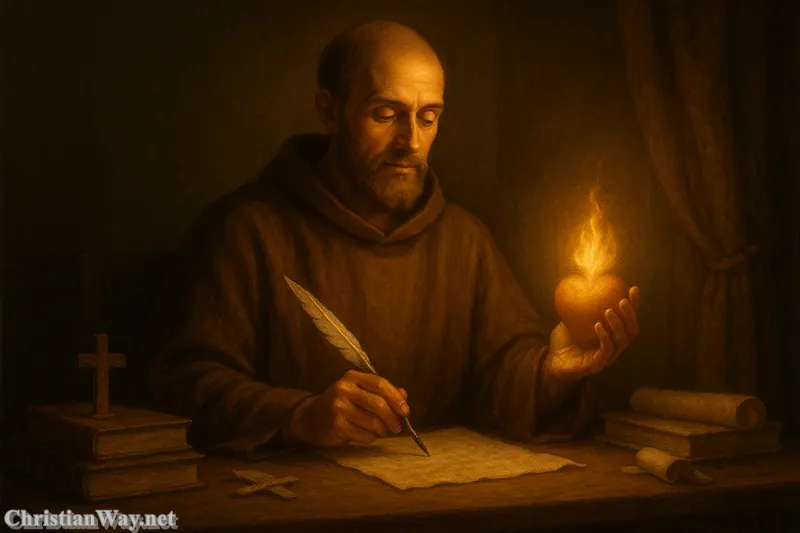Dear friends in Christ,
Every century has its saints who rise like beacons over the sea of human history — souls who remind the world that God is near, that love conquers fear, and that holiness is still possible. Among them, Saint John Paul II stands tall as one of the most radiant figures of our time.
He was a philosopher and poet, a mystic and missionary, a man of deep prayer and boundless energy. As Pope John Paul II, he carried the Gospel to the ends of the earth, spoke to millions, and called every human heart to rediscover its divine dignity.
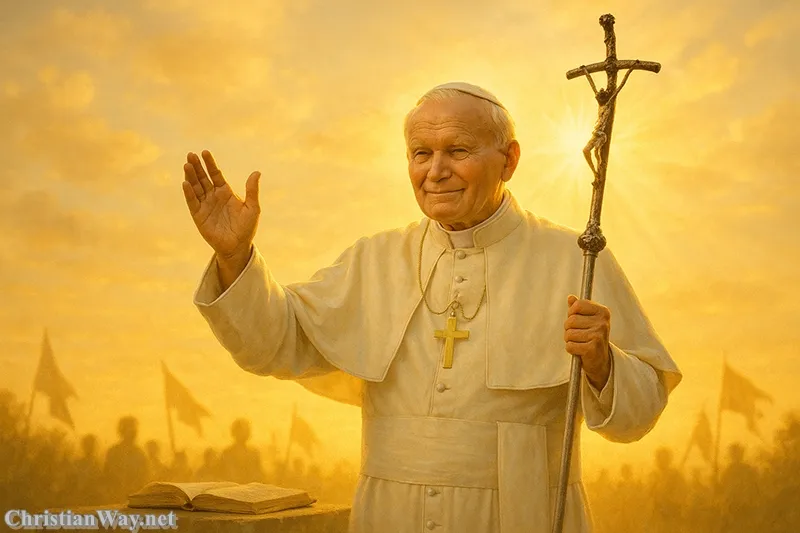
To speak of Saint John Paul II is to speak of courage — the courage to forgive, to hope, to love, and to proclaim Christ in a restless age. His voice still echoes in the world:
“Do not be afraid. Open wide the doors to Christ.”
Let us walk together through his extraordinary life — from the shadows of war to the light of sainthood — and discover how one man’s faith changed the world.
The Early Life of Saint John Paul II — Karol Wojtyła’s Journey of Faith
A soul shaped by suffering and love
Pope John Paul II biography begins in Wadowice, Poland, on May 18, 1920. Born Karol Józef Wojtyła, he was the youngest of three children in a humble, devout family. His mother Emilia died when he was just nine; his older brother Edmund, a doctor, died a few years later.
Left alone with his father, Karol learned the quiet strength of faith and perseverance. His father, a retired army officer, became his first teacher of holiness — a man of prayer who knelt nightly in intercession.
Even amid loss, young Karol discovered joy in study, sports, and the beauty of nature. He loved hiking, skiing, and acting — his creative gifts later shaped his theology, his love for words, and his empathy for every human story.
When Nazi Germany invaded Poland in 1939, his world was torn apart. He worked in a quarry and chemical plant while secretly studying for the priesthood under the underground seminary of Kraków, risking his life to answer God’s call.
From the ashes of war, God raised a shepherd whose faith would never bow to fear.
The Priesthood and Early Ministry of Karol Wojtyła
A priest for every soul
Ordained a priest in 1946, Fr. Karol Wojtyła served first in rural parishes, then in Kraków, where his deep humanity and love for youth began to shine. He loved to lead young people on hiking and kayaking trips, celebrating Mass outdoors, listening to their struggles, and guiding them toward holiness.
He saw in every young person the image of Christ and often told them:
“You must demand more of yourself, even when others do not demand it of you.”
As a philosopher, he studied the nature of human love and freedom, writing works that would later shape his teachings of Saint John Paul II, including the profound Theology of the Body — a vision of human dignity, sexuality, and love as reflections of divine truth.
By 1958, at age 38, he became the youngest bishop in Poland, and later, Archbishop of Kraków. His wisdom, compassion, and courage caught the attention of the universal Church — preparing him for one of history’s most extraordinary missions.
The Election of Pope John Paul II — A Shepherd from the East
A moment that changed the world
On October 16, 1978, the College of Cardinals elected Karol Wojtyła as Pope John Paul II, the first non-Italian pope in more than 450 years. His first words from the balcony of St. Peter’s Basilica set the tone for his entire papacy:
“Be not afraid! Open wide the doors to Christ.”
He chose his papal motto “Totus Tuus” — Latin for “Totally Yours” — a tribute to the Blessed Virgin Mary, to whom he entrusted his entire life and mission. His Marian devotion became the heart of his spirituality, especially his trust in the Divine Mercy revealed through Saint Faustina Kowalska, another Polish saint.
John Paul II’s pontificate spanned 27 years, making it one of the longest in Church history. He became the Pope of the youth, the Pope of the family, and the Pope of mercy — a living image of Christ’s love in the modern age.
The Teachings of Saint John Paul II — Faith for a New Millennium
A theology rooted in the dignity of the human person
The teachings of Saint John Paul II are vast and rich — spanning philosophy, morality, spirituality, and global justice. Yet at their heart lies one truth: the human person is made in the image of God and called to love.
In his encyclicals such as Redemptor Hominis (The Redeemer of Man) and Evangelium Vitae (The Gospel of Life), he proclaimed that every human life — from conception to natural death — possesses infinite worth.
He often said:
“The human being is the way of the Church.”
His Theology of the Body explored human love and sexuality as a divine vocation, showing that our bodies express the mystery of God’s love. His Letter to Families and Letter to Women uplifted the beauty of vocation in family life and motherhood.
John Paul II was also a champion of truth in freedom. He believed that authentic freedom is not doing whatever we wish, but choosing what is good, true, and holy.
Saint John Paul II and the Fall of Communism
A prophet of freedom and hope
Raised under both Nazi tyranny and communist oppression, John Paul II became a powerful moral voice against totalitarianism. His 1979 visit to Poland ignited a spiritual revolution — millions chanted, “We want God!”
This courage inspired the Solidarity movement, led by Lech Wałęsa, which eventually helped bring down the Iron Curtain. Historians credit John Paul II as one of the key figures in the fall of communism, not by political power, but by faith and truth.
He declared:
“A world without God becomes a world without meaning.”
Through his witness, nations rediscovered their soul — and the world saw that faith, not fear, is the true foundation of freedom.
The Pope of Mercy and Forgiveness
A living witness of reconciliation
Saint John Paul II’s life was marked by mercy. After an assassination attempt in 1981 by Mehmet Ali Ağca, he miraculously survived. But his response stunned the world: he visited his attacker in prison and forgave him.
This moment became an image of Christ-like forgiveness. It was not political or symbolic — it was real mercy, born from prayer.
He canonized Saint Faustina Kowalska in 2000 and instituted Divine Mercy Sunday for the entire Church, declaring:
“There is nothing that man needs more than Divine Mercy.”
His spirituality was deeply Eucharistic and Marian — nourished by daily adoration, confession, and the Rosary. He showed that holiness is not absence of suffering, but the transfiguration of it through love.
Saint John Paul II and the Youth
The Pope of the young heart
Perhaps no saint in modern history has touched young people as profoundly as John Paul II. He loved the young, believed in their goodness, and challenged them to live the Gospel without compromise.
In 1985, he founded World Youth Day, gathering millions of young pilgrims from around the globe. To them he said:
“You are the future of the world, the hope of the Church. Do not be afraid to give your life to Christ.”
Through his joy, energy, and authenticity, he revealed the beauty of holiness as something alive, attractive, and human. His legacy still echoes in every World Youth Day celebration — a global fruit of his fatherly love.
Suffering and Final Years — The Cross Lived Publicly
A lesson in redemptive suffering
In his later years, John Paul II’s body grew frail from Parkinson’s disease. Yet even as his voice trembled and his movements slowed, he never stopped teaching.
He carried his cross publicly, turning his suffering into a homily of courage and love. To the end, he reminded the world that human dignity does not fade with age or illness.
When asked why he did not retire, he replied:
“Christ did not come down from the Cross.”
His final message on April 2, 2005 — whispered with his last breath — was,
“Let me go to the house of the Father.”
The world wept, but heaven rejoiced.
Canonization and Legacy of Saint John Paul II
The saint of our times
After his death, millions cried out, “Santo subito!” — “Make him a saint now!” Their cry was answered.
John Paul II was beatified in 2011 by Pope Benedict XVI and canonized in 2014 by Pope Francis, alongside Saint John XXIII. He became one of the most beloved saints of the modern era, remembered as the Pope of Mercy, the Pope of Families, and the Pope of the Youth.
His feast day, October 22, marks the anniversary of his papal inauguration — a day to renew our courage to “open wide the doors to Christ.”
His legacy endures in countless schools, churches, and movements inspired by his message of hope and dignity.
The Spirituality of Saint John Paul II
A heart fully given to God
The spirituality of Saint John Paul II can be summed up in three words: Christ, Mary, and Man.
He was a man of profound prayer. Rising before dawn, he often spent hours in silent adoration. His motto, Totus Tuus, reflected his complete consecration to Mary, trusting her to lead him always to Jesus.
His love for the Eucharist was the center of his priesthood. He wrote in Ecclesia de Eucharistia:
“The Church draws her life from the Eucharist.”
He was also a pilgrim pope — visiting 129 countries, bringing Christ’s presence to the world. Everywhere he went, he carried the same message: that every human life has worth, that mercy is stronger than sin, and that holiness is possible for all.
Lessons from the Life of Saint John Paul II
1. Be not afraid
Fear is the enemy of faith. Courage comes from trusting Christ with all our heart.
2. See the dignity in every person
He taught that every human life reflects the image of God and must be defended.
3. Suffering can be a mission
His public illness taught us that even weakness can become a witness of love.
4. Love Mary, trust her guidance
His devotion to Our Lady reminds us that consecration to Mary leads to deeper union with Christ.
5. Build a civilization of love
He called all Christians to transform society through mercy, truth, and compassion.
Saint John Paul II and the Modern World
Saint John Paul II was not only a pope for his time — he was a prophet for ours. In an age marked by confusion, relativism, and loneliness, his words remain a compass pointing toward Christ.
He showed that the Church is not a relic of the past but the living Body of Christ, called to bring joy to every human heart. His teachings on the family, youth, mercy, and human rights continue to inspire leaders and laypeople alike.
He once said:
“The future starts today, not tomorrow.”
Through his intercession, may our generation carry his light into the world.
🕯️ Reflect and Pray
O merciful God,
You raised Saint John Paul II to lead Your Church
with courage, wisdom, and love.
Grant that, inspired by his words and example,
we may not be afraid to open our hearts to Christ,
to defend life and truth,
and to serve with joy.
Through his intercession,
help us to build a world of faith and mercy,
where every soul knows its worth in You.
Amen.
May the courage and love of Saint John Paul II
renew your faith and inspire your heart
to trust in Christ without fear.
— Fr. John Matthew, for Christian Way

